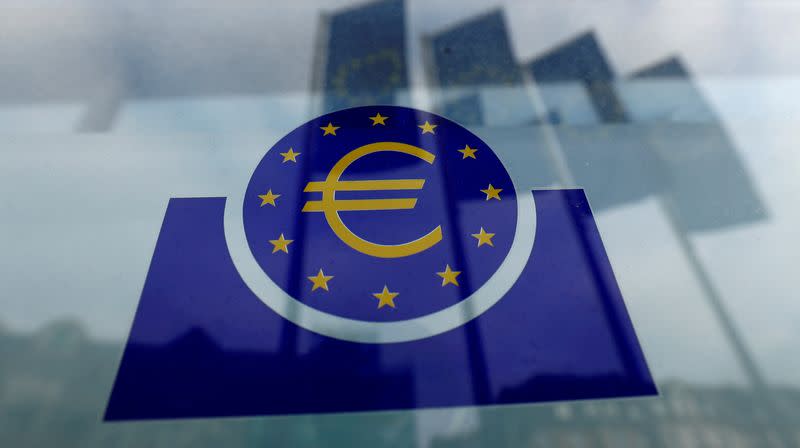Germany leads big bond rally as inflation finally heads down

By Yoruk Bahceli
(Reuters) -Germany is leading the biggest rally in global bond markets since March's banking rout as cooling inflation and a weakening economy suggest European Central Bank rate hikes are nearing an end.
Borrowing costs, or bond yields, in the benchmark euro area issuer are down at least 20 basis points (bps) this week. Alongside British and U.S. peers, yields - which move inversely to bond prices - were set for their biggest weekly declines since mid-March when banking turmoil sparked a dash to safe-havens.
Certainly, government bonds remain hostage to data which one day might support the case for further rate increases and the next day suggest peak rates are near, keeping volatility high.
Yet this week's notable moves suggest investors are plumping with the view that easing inflation and recession risks are strong bond buy signals.
Data from across the euro area, including Thursday's bloc-wide print, showed inflation tumbling in May, throwing doubt on how much further rates need to rise.
Traders now expect the ECB hikes to peak at around 3.7% by September, suggesting two more hikes from 3.25% currently. A chance of 4% was priced in last week.
"We have argued that (the fall in) inflation (in the euro zone and in the UK) is lagging the U.S. ... We think that is now changing," said Kaspar Hense, senior portfolio manager at BlueBay Asset Management. "After summer, most likely the pressure on central banks (will be) much lower."
The bond rally is being led by longer-dated yields, which are falling faster than shorter-dated ones in a so-called yield curve flattening that typically signals economic slowdown.
Signs were aplenty. Euro zone bank lending slowed again in April, a factory downturn deepened and economic sentiment in the bloc and Germany - which slipped into recession in early 2023 - deteriorated more than expected in May.
Flavio Carpenzano, investment director at Capital Group, which manages $2.2 trillion, said the firm was now more neutral on interest rate risk in the euro zone and positioning for a steepening of the yield curve - when shorter-dated borrowing costs fall faster than longer-dated ones - a bet it has made in the United States.
"The reason why is because we expect ... recession to come in Europe (as well)," he said.
COMPLICATED
Investors cautioned that the European inflation outlook remained more complicated than in the United States, where inflation broadly is down sharply from peaks.
"It's too early for the ECB to be happy about the dynamic on inflation," said Cosimo Marasciulo, head of fixed income absolute return at Amundi, Europe's largest asset manager overseeing $2.1 trillion.
"In terms of attractiveness of the market we think that U.S. rates, even more after this repricing, are more interesting from a medium-term point of view," Marasciulo added.
He suspected the U.S. Federal Reserve was finished hiking rates and five-year Treasury yields would fall by up to 50 bps by the end of the year, from 3.8% now.
Britain's Legal & General Investment Management is overweight U.S. Treasuries on recession expectations.
OUTLIER?
Britain is largely seen as an outlier. Its inflation, at 8.7%, is among the highest in Europe, suggesting UK government bonds, or gilts, will remain under pressure as traders bet sticky inflation will keep the Bank of England in rate-hiking mode longer than anticipated.
Two-year gilt yields jumped over 50 bps last week alone on higher than expected inflation numbers.
That has been a buy signal for some investors like BlueBay's Hense, who has increased exposure to UK interest rate risk.
But NatWest Markets has revised up its 10-year gilt target to 4.6%, from 4.2% currently. Pictet Wealth Management has revised it year-end forecast to 4% from 3.3%.
Volatility - price swings in either direction - meanwhile looks likely to continue. A closely watched U.S. bond volatility gauge this week rose to its highest in almost two months. This week's fall in borrowing costs followed sharp rises the previous two weeks on bets for more rate hikes..
Those bets too have swung wildly; as much as 75 bps of Fed rate cuts by year-end were priced in early May, but now expectations are for cuts of less than 20 bps.
Futures price a Fed pause in June, a sudden turnaround from solid bets for a 25 bps hike priced in last week.
Oliver Eichmann, head of rates, fixed income EMEA, at DWS, said he was cautious on shorter-dated bonds as central banks will need to remain vigilant on core inflation and won't be able to lower rates once hikes end.
DWS expects the ECB to hike rates to 4%.
"It's currently not that easy to navigate, because the point in time will come, and maybe it's not that long in the distance, where you have to change your position from being cautious on the front end," Eichmann said.
(Reporting by Yoruk Bahceli; additional reporting by Harry Robertson; Editing by Dhara Ranasinghe and Susan Fenton)

 Yahoo Finance
Yahoo Finance 